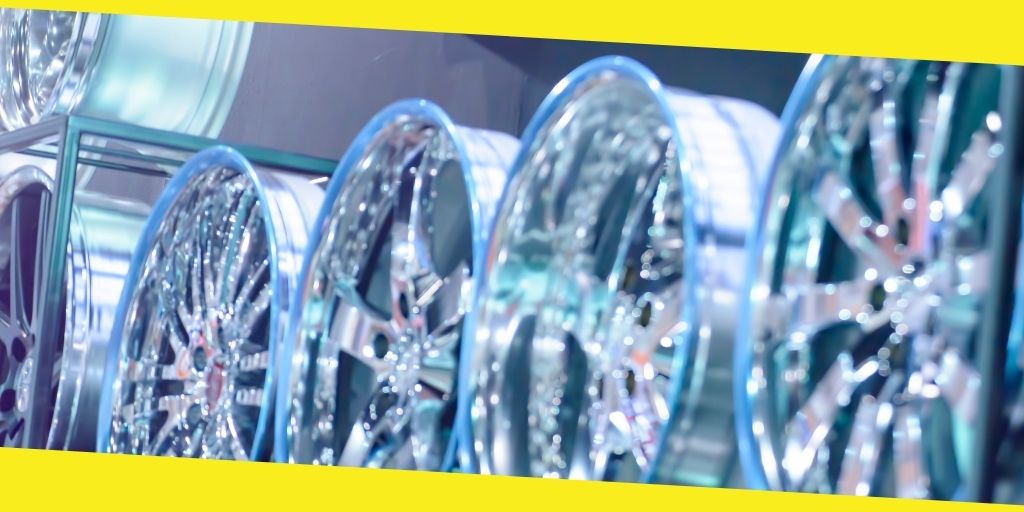How to Choose the Mags That Fit Your Vehicle
This post was last updated on November 7th, 2021

If you’re anything like the millions of motorists out there, you probably only have a surface-level understanding of your car. This is relatively more common than you think, as a large percentage of drivers don’t even read the car manual because it’s easier to just search for the answer online.
There’s no doubt that you’re reading this because you need to change your vehicle’s tyres and require end-to-end information. Well, you’re in luck as you’ll have all the information you need to pick and choose your mags soon.
What Are Mags?
In the 1930s, people used magnesium wheels as an alternative to steel wheels. By the 1960s, magnesium wheels were extremely popular in race tracks due to their weight being far lesser than a steel wheel. But, this lack of weight came at the cost of durability. Magnesium wheels were prone to corrosion and easily caught fire compared to steel wheels, making them entirely impractical for commercial vehicles.
A new alloy of magnesium and aluminium forged to create lighter, more durable, and anti-corrosive wheel rims are now commonly called mags in the automobile community. You could still get a cast magnesium wheel, but it’s comparatively expensive and not recommended unless you’re a professional racer.
Alloys All The Way
Let’s take a look at some more advantages an alloy has over steel wheels:
- alloy wheels are lighter than steel counterparts, making them more fuel-efficient
- alloy wheels offer better handling and less steering resistance
- alloy wheels don’t bend like steel wheels because they are made of a hardened magnesium-aluminium combination
- alloy wheels overheat less due to better rim ventilation
- alloy wheels do not rust
Now that you’re fully aware of the benefits of alloy wheels, let’s get down to figuring out how to pick one for you:
Rim Width
Ideally, it would be best if you had fuel rims with the same length as the tyre, but people generally want to go for wider rims because of an aesthetic appeal.
Going too wide with the rims would also mean changing the tyres, so think twice before making a call that ends up costing you a lot of money.
Still, if wider rims are something you want, remember the rule of two-plus-one. You shouldn’t go for any increase in rim size beyond 2 inches for the diameter and 1 inch for the width.
Wheel Size
The appeal for large tyres is quite rampant now, so while this information may seem redundant, it no doubt requires repeating. Always match the rim size with the exact size of the tyre. If you have a 17-inch steel wheel, your upgrade to alloy is also 17-inch and nothing else. Larger rims mean getting wider tyres.
PCD
PCD or Pitch Circle Diameter refers to the wheel bolts/studs’ distance from the wheel’s center point/axle. It is commonly measured by looking at the distance between the centers of the opposing bolts.
If your PCD is 4×114, you have 4-wheel bolts that are evenly spaced on a 114 mm diameter. If you pick an alloy that has a different PCD, it won’t fit on your vehicle.
Offset
The deviation between the centerline of the wheel and the fitting point to the hub is called offset. There are three types of offset based on their deviation: positive, negative, and zero, with zero being where the hub is directly even with the wheel’s center. Choosing the right offset is dependent on the vehicle and tyre type and must not be ignored when picking out new mags.
Upsizing
This is one of the most crucial aspects of picking out the right alloy for your car. Many people wish to go in for larger rims, but they often don’t realize its implications. When upsizing, it is important to remember that the overall diameter of the wheel must not change. If you were to go for a larger alloy wheel, you would undoubtedly have to accommodate the same by increasing the tyre size.
If the overall diameter of the tyre and alloy combination (otherwise known as the rolling diameter) is higher than usual, your speedometer and odometer reading will be affected. This is because most of these readings are determined by recording wheel rotations, which will not be the same if the rolling diameter has changed.
In other words, if you were to increase the width, it would be wise to accordingly reduce the sidewall height to maintain a similar overall diameter. This equation can help you measure the right upsizing for your vehicle.
Trust the Experts
If all this information seems overwhelming, relax. It’s always common to find new details too complicated, but on the bright side, you have experts who can take you through this whole process and make it much easier on you. Just remember to ask questions and be fully informed on what changes you need and want from your vehicle.
Recommended For You
How Has Driver Assistance Technology Advanced?
Most Inside
Most Inside offers high-quality recommendations and valuable updates to enhance all aspects of your life, providing premium guidance and enriching experiences.




